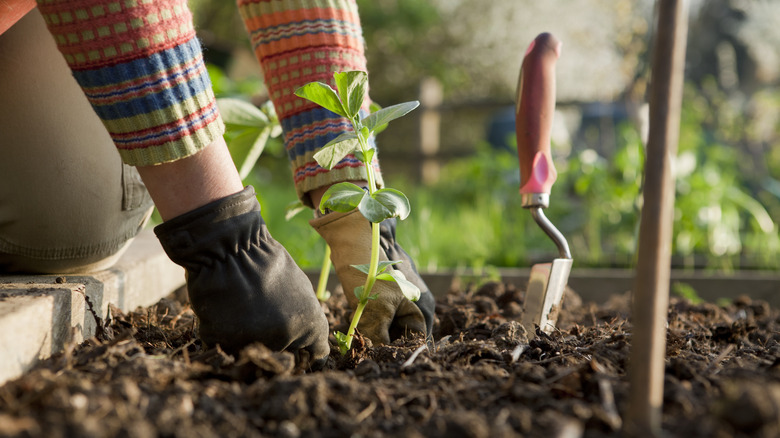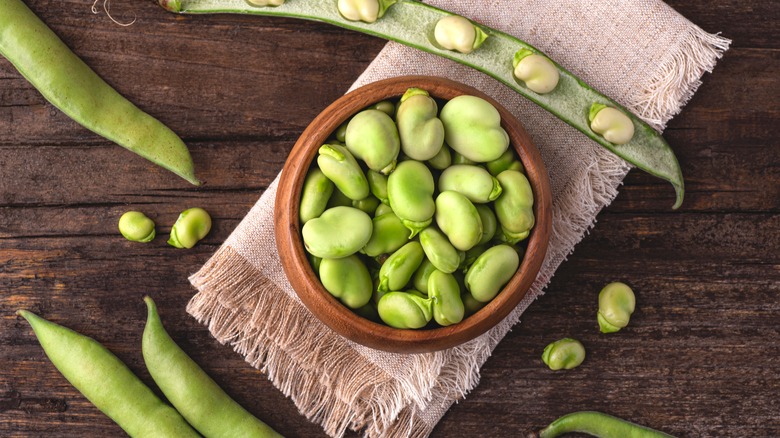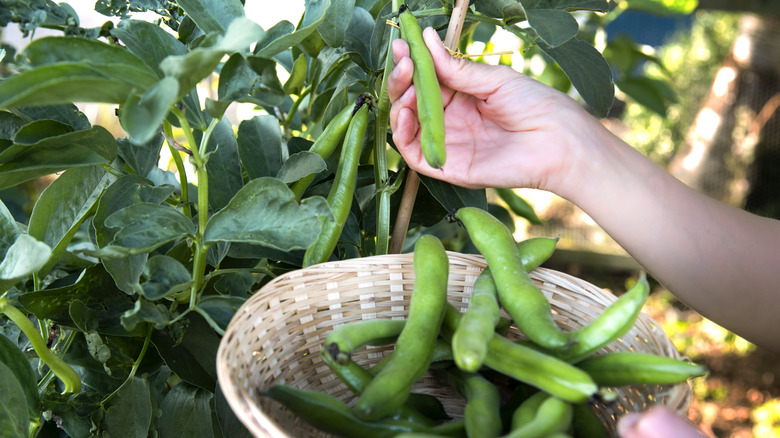Why You'll Want To Plant These Beans In Your Garden For Healthier Soil
Venturing into the world of gardening brings you face-to-face with some incredible plants, but none quite like the fava bean. Known scientifically as Vicia faba, and colloquially as broad beans or faba beans, these members of the Fabaceae family are a popular garden choice. They originate from the fertile crescents of the Mediterranean and the Middle East and have been a staple in diets for thousands of years, and it's not hard to see why. Not only are they widely cultivated for human consumption, but they also play a significant role in protecting and enriching the soil as a cover crop.
Fava beans have a distinct appearance, encased in a pod that is narrow, elongated, and flat, typically containing up to six seeds. But it's not just their looks that make fava beans stand out. These beans are a nutritional powerhouse, packed with plant-based protein. But let's not overlook their gardening prowess. Fava beans do more than grow; they enhance the soil, making it a healthier place for other plants to thrive. Given their numerous benefits, it's important to know how to grow fava beans effectively so that both you and your garden can get optimum results.
Enhancing soil life and weather protection
Fava beans truly excel at maintaining soil life thanks to their nitrogen-fixing abilities. They have this incredible knack for converting atmospheric nitrogen into a form that plants can readily use. This enriches the soil, turning it into a fertile and well-nourished bed for other plants to flourish. This is particularly beneficial, especially in crop rotations — with fava beans in the mix, you're essentially giving back to the earth, nurturing it naturally without the crutch of artificial fertilizers.
But there's more to these beans than just underground magic: They also act as the unsung heroes in your winter garden. When the chill sets in and other plants start to struggle, fava beans come into their own. They thrive, and in doing so, they provide a shield of protection for the soil. This robust nature of fava beans is a guard against erosion and nutrient loss, common woes in harsh winter conditions.
The advantages of fava beans extend even further, particularly in how they manage unwanted guests like weeds. Their ability to suppress weeds, especially those like the common sowthistle, which often resists conventional herbicides, is noteworthy. By introducing these beans to your garden, you're essentially deploying a natural, organic method to manage weeds. This reduces the dependency on chemical weed killers, steering your garden practices towards a more sustainable and environmentally friendly approach. In a nutshell, fava beans don't just grow; they nurture, protect, and sustain.
Cultivating and harvesting fava beans
When you decide to grow fava beans, you're not limited to just one type — there's a whole range to choose from. Each bean type is unique, offering varied features, such as distinct planting times and varying heights. This diversity means you can select the variety that best fits your garden's conditions and your culinary preferences. Interestingly, fava beans can brave cold temperatures, bringing life to your garden even when most plants are in hibernation mode. Add this to the fact that they are shade-tolerant, which makes them adaptable to various garden layouts, ensuring they find a home in nearly any part of your garden.
For planting, the process is as simple as it gets. Plant the seeds a couple of inches deep. Ensure the soil is well-drained, ideally in a warm, sunny, and sheltered spot in your garden. Space the seeds between 3 and 5 inches apart to give each plant room to flourish. Within a week or two, typically seven to 14 days, you'll see the first signs of life as the seedlings push through the soil. Once your fava beans start growing, regular watering and basic upkeep are crucial. Even though these plants are known for their resilience, a little care goes a long way. Address any growth issues promptly, and you'll be on your way to a bountiful harvest.


